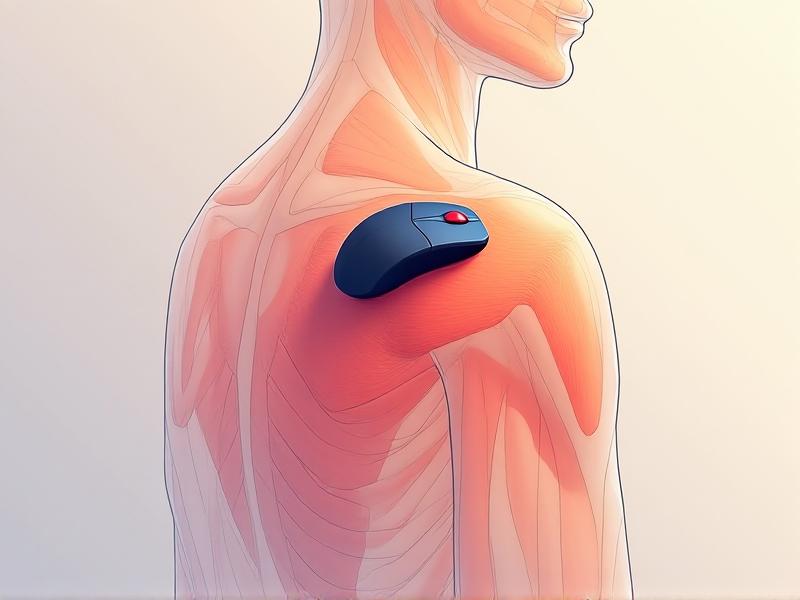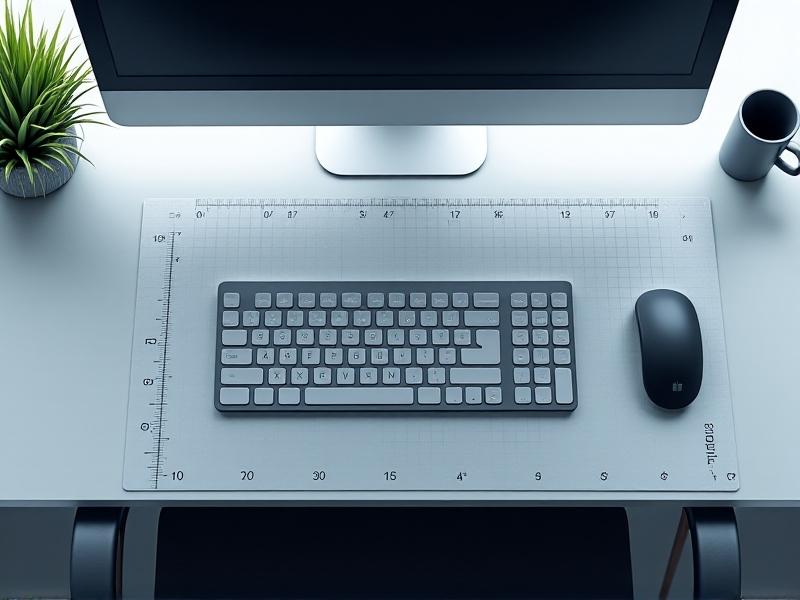```html
Understanding Shoulder Anatomy and Mouse-Related Strain

The shoulder is a complex network of muscles, tendons, and joints designed for flexibility. However, prolonged mouse use often forces these structures into static, awkward positions. The rotator cuff, trapezius, and deltoid muscles bear the brunt of repetitive motions, leading to fatigue and inflammation. Poor mouse placement exacerbates strain by encouraging reaching or elevated arm positions, compressing nerves and reducing blood flow. Over time, this can result in chronic conditions like tendinitis or thoracic outlet syndrome. Understanding this interplay is the first step toward mitigating discomfort.
Ergonomic Principles for Mouse Placement

Effective ergonomics prioritizes alignment and ease. The mouse should sit at the same height as the keyboard, allowing the elbow to rest at a 90-degree angle. Position it within a "comfort zone"—a semicircle radius of 15-20 cm from the body’s midline—to prevent overreaching. Forearm support is critical; avoid dangling the elbow or pressing it into hard surfaces. Adjust desk height or use an articulating tray to maintain a neutral wrist posture. These adjustments minimize muscle activation and reduce cumulative stress on the shoulder girdle.
Optimal Mouse Positioning Techniques

Place the mouse directly adjacent to the keyboard’s number pad (or centered if using a tenkeyless model). This prevents abduction—a sideways arm movement that strains the supraspinatus muscle. If working on a wide desk, consider narrowing the setup or using a keyboard tray. For left-handed users, mirror the setup but ensure consistency to avoid confusing muscle memory. Experiment with tilt angles; a slight inward rotation (5-10 degrees) can ease tension in the forearm extensors. Regularly reassess positioning to adapt to task changes or fatigue.
Accessories and Tools for Enhanced Support
Vertical mice reduce forearm pronation, while trackballs minimize arm movement. Pair these with a padded, contoured wrist rest to maintain neutral alignment. Desk mats with gel sections offer cushioned support during long sessions. For hybrid workstations, monitor arms and adjustable desks enable dynamic posture shifts. Consider a roller mouse or foot pedal for extreme cases of shoulder sensitivity. Test accessories incrementally—overcomplicating the setup can introduce new strain points.
Exercises and Stretches to Complement Proper Placement
Incorporate micro-breaks every 30 minutes for chin tucks or scapular squeezes. Use a resistance band for rows to strengthen the rhomboids and rear deltoids. The "thread-the-needle" stretch alleviates rotator cuff tightness, while pendulum swings improve joint mobility. Pair these with diaphragmatic breathing to release tension. Consistency matters more than intensity—gentle, frequent movement counteracts the rigidity of desk work.
Case Studies: Real-World Applications and Outcomes
A graphic designer with chronic shoulder pain switched to a left-handed vertical mouse, reducing dominant-side strain during 10-hour workdays. A programmer using a roller mouse reported a 60% decrease in trapezius stiffness within three weeks. Another case saw a data analyst combine a keyboard tray with hourly trapezius stretches, eliminating nerve tingling. These examples underscore that tailored solutions yield measurable improvements, even in demanding professions.




